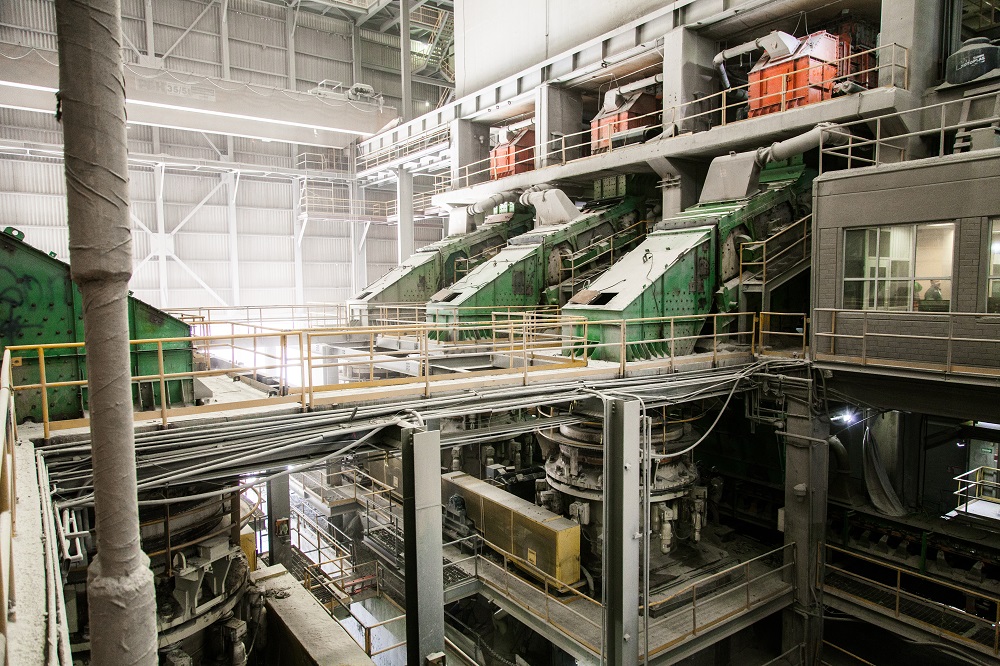Crushing, grinding, flotation, solvent extraction, electro winning, tailings management…Metso Outotec covers it all.
The new mineral processing entity might be less than a week old, but many in the industry would have, no doubt, had some burning questions to ask since the planned merger was announced on July 4, 2019.
IM had a chance to put some of these questions to Stephan Kirsch, President Minerals business area, Metso Outotec, gaining an initial impression of what the combination of the two companies means for the Minerals business he heads up.
IM: What big mining industry challenge will the combined group be better placed to tackle? What equipment/solutions/expertise within the group are the most important in achieving these goals?
SK: One issue – although not technology-focused – is community engagement.
Some mining operations in the world face challenges in terms of engaging with local communities and returning benefits to them. There is a social responsibility for mining companies, as they are the operators, but also for mining industry supporters involved in such projects.
That said, the vast majority of the mining industry runs initiatives that ensure communities understand mining companies are not just there to extract the iron, copper or gold and make money from it. They give back to local stakeholders and help improve community standards.
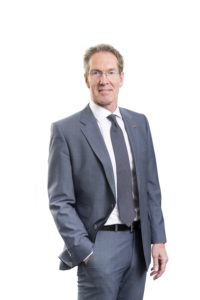
From a technology perspective, an industry issue we are well equipped to tackle is tailings management. With our combined offering, we look very seriously into solutions that can involve dewatering, dry stacking, and the reprocessing of tailings.
You asked about the products involved in solving these challenges…that includes filtration technologies, bulk materials handling products for conveying and stacking, and then various ore sorting technologies for the reprocessing.
Another trend to highlight is the use of energy or, more specifically, the need to reduce power consumption. There is some work to do here.
When you go and buy a car, you tend to focus on the fuel consumption. The mining industry, however, aims for high installed power because there is a sentiment that more power in the mill means more product out of the mill, more fines and, as a result, better downstream recoveries. In a way that is true for technologies like horizontal mills, ball mills and SAG mills, but when you turn to different, newer technologies it is not always the case.
One of these technologies is HPGRs which were introduced in the minerals industry in the mid-80s. Today, HPGRs are used in high tonnage, competent, abrasive ore applications due to their lower specific power draw and other downstream benefits compared to conventional technologies.
One can add to this, conserving other natural resources such as water. Water scarcity is obviously a problem and we should look at the recycling of process water wherever possible (that is where the filtration technology comes into play again) at the same time as examining more energy-efficient flowsheets.
There is quite a bit we can do to solve some of these challenges from a mineral processing perspective, but, the problem is, the industry remains conservative and anything new takes time to be implemented sustainably.
IM: I know Metso has previously talked about creating a bulk ore sorting solution for industry. Considering this, do you as Metso Outotec expect to continue leveraging the agreement Outotec has in place with TOMRA to carry out more sensor-based ore sorting projects? Alongside this, will you continue with your own bulk sorting projects?
SK: Early removal of tailings/overburden from the processing plant feed has been the operator’s dream for probably a century! This concept of preconcentration has been a consideration for many years, but in the last 30 or so years, technologies with different sensors have been developed to help with this separation process.
It is the ability to use sensor technology to single out particles on a conveyor belt at an appropriate speed and quantity that is the industry challenge. After all, when it comes to mining, we are talking about bulk materials that must be processed, not single elements like you have in the recycling and food sectors where much of this sensor technology originated from.
You need to look at the operating economics of such plants. When I say economics, I am factoring in throughput and recovery rates: you want a high tonnage and you don’t want to waste your ore, which is already low grade compared with what was being mined, say, 30 years ago.
The answer to your question is that Metso has been looking into preconcentration technologies for some time – we have R&D projects and partners looking at it. The same is the case with Outotec. Going forward, we will analyse this and make a call on whatever is the best combination to continue with such work.
Personally, I am a big believer in segregating waste as early in the process as possible to save energy downstream. But there are technical challenges to this.
IM: Both companies have been expanding their modular offering in recent years (Metso with its flexible FIT™ stations and the smart Foresight™ stations/Outotec with its modular paste backfill plants and HIGmill): is a lot of your mining and metals R&D currently focused on reducing the footprint of your solutions?
SK: Our R&D budget – as you probably heard on the webcast last week – is quite significant when put together. As Metso Outotec committed to keep both of our budgets unchanged, the spend comes to about €100 million ($112 million). A market survey we carried out revealed that, in terms of R&D spend, we are at the top of the industry.
Then, we must spend this money wisely wherever we see it being applied most economically for the benefit of our customers and for Metso Outotec. The modular crushing stations you mention are an area of interest we started developing years ago. We see good potential for this modular offering and will continue to develop it.
As for the percentage of the budget we will dedicate to it, this will – like all R&D projects – be analysed alongside others for crushing, grinding and all separation technologies with a strong focus on product innovations, digitalisation and sustainability.
IM: As you hinted at earlier, do you see tailings management being one of the combined group’s core strengths?
SK: It is one big focus area for us, but only one.
Crushing and grinding, which I mentioned earlier, is another strong area. We are a market leader in some of the crushing technologies we offer, and high up the industry when it comes to grinding technologies. We plan to really expand on this side.
I mentioned HPGRs where we have brilliant, world-class technology, but are missing the installed base. With 20-25 years of HPGR experience, I know we have the technology to make a difference, we just need to effectively bring it to market.
The whole re-grind space is really a future area for us to pursue due to industry-wide issues of falling grades, the need to reduce power consumption and fine grinding requirements.
Back to the original question, I expect Metso Outotec to be a strong player for dewatering and tailings management solutions.
IM: Outotec has a much more developed downstream business in areas like hydrometallurgy and smelting, etc in mining than Metso – will this remain a core part of the combined group?
SK: The front-end strength of Metso for mineral processing plants and the wet processing business focus of Outotec shows how well both companies complement one another. From a technical perspective, this is one of the reasons why the merger of Metso and Outotec makes much sense.
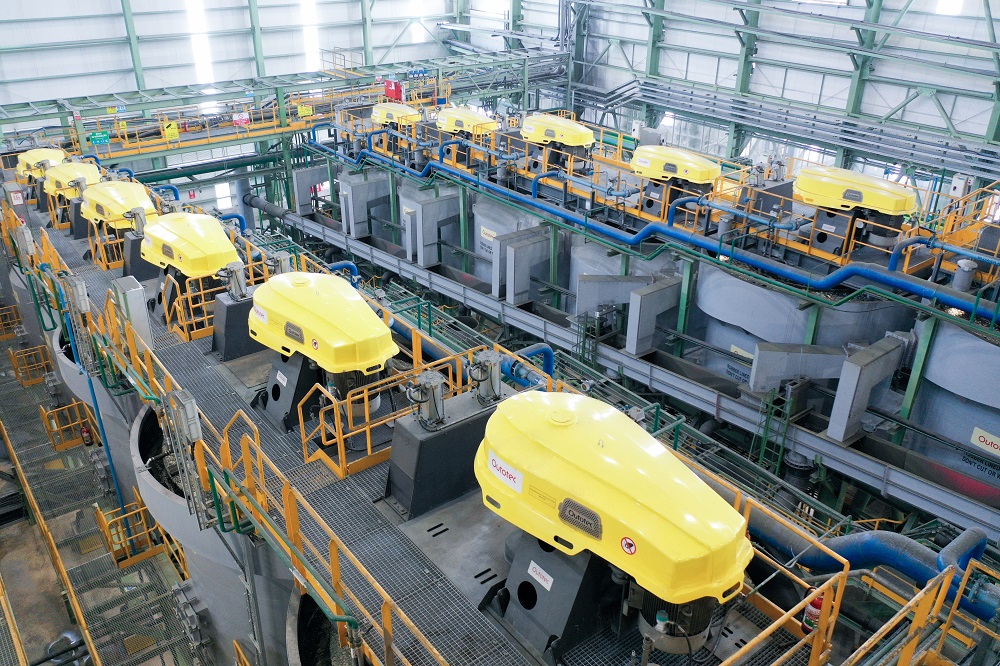
IM: In what segments of the mining and metals market do you see the most complementary solutions within Metso and Outotec?
SK: When we brought these two companies together it is amazing how many renowned international mineral processing experts came with it. We can provide much more comprehensive services to the industry because we can look at the entire flowsheet – from run of mine ore, to metal.
Why is this so important for our customers? You can bundle equipment together to make tenders and dealing with OEMs more economical for mining companies. But, more than that, we can bring a much larger pool of experts to a project to interact and talk with each other to provide the right innovations. This is the ‘one plus one equals three’ effect.
We can also look at balancing the equipment so, for example, the primary crusher is appropriately configured to produce the right ore for the secondary crushing process and the screens are amply sized to effectively carry out their job. That then leads to finding the optimal operating point for the HPGRs and milling equipment and then the downstream processing segment. This type of equipment balancing is highly interesting for the market, creating win-win situations for customers and us as an OEM.
IM: Do you see your relationship with mining customers changing because of this holistic approach?
SK: Yes and no. There are companies that will appreciate this wider offering and there are others that will continue to come to us as part of a more traditional way of tendering for mineral processing equipment.
I see a trend where larger companies are coming back to reliable OEMs because the availability, sustainability and reliability of equipment is much more important than saving a dollar in capex in the first place. That is a trend we have seen strengthen even more recently with COVID; we all know when a plant is not running, it costs operators hundreds of thousands of dollars per day in lost revenue.
Yet, there are always customers that say capex is king. They will do everything they can to tender it most competitively from a capital expense perspective, regardless of the long-term total cost of ownership benefits choosing another solution will have.
IM: How will your digital offering be strengthened through the combination?
SK: At Metso, we started, especially in South America, with a strong operation and presence in terms of remote control and remote operating and maintenance support for processing plants.
The service solutions that have been developed and established in some countries, specifically for Metso and for Metso equipment, in the new company will, of course, be transferred into the installed base of Outotec (for example, a facility previous owned by Outotec in Espoo, Finland, is now a Metso Outotec Performance Center facility).
We often heard from customers: ‘We have great equipment from the Outotec side, but we have never experienced the great Metso services.’
What is so encouraging to see is that there is demand from the industry for such a combination of equipment and services.
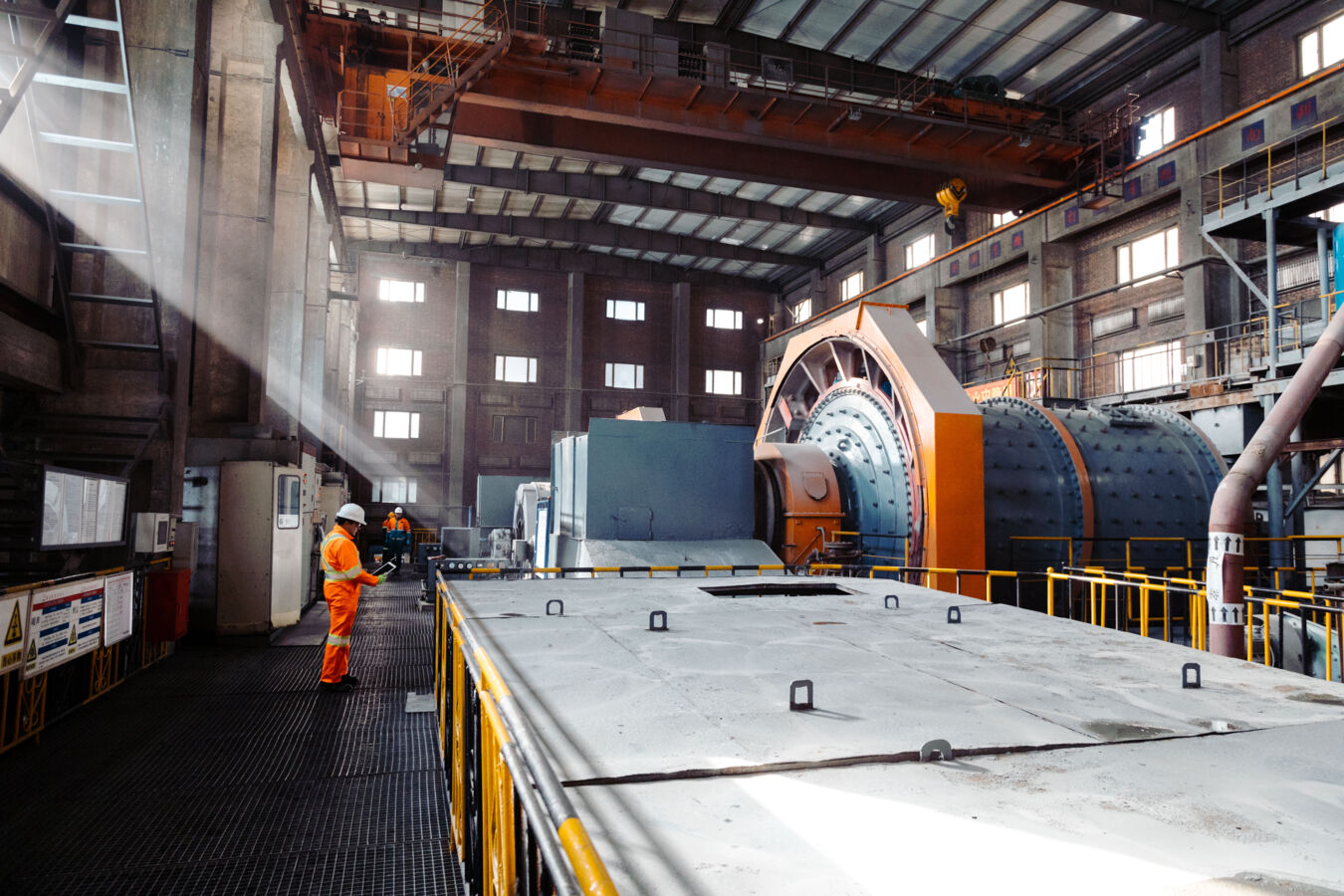
IM: Where do you see an overlap of solutions (for instance, possibly crushing and grinding equipment (SAG/AG/ball mills), vertical crushing tech (Vertimill/HIG mill)) or flotation (Outotec has a greater market share but Metso supplies some interesting options like column flotation, plus is the leader in flotation camera monitoring with VisioFroth)? Historically, have you been competing against each other for contracts in these market segments?
SK: As you know, for 12 months or so, there was intense scrutiny from the regulatory authorities to find out if the companies could merge or not because of an overlap, and the answer that came back is yes.
From a regulatory authority perspective, there is no overlap, and, from a technical perspective, I view it in a similar way.
One prime example to give would be the Vertimill (below, left) and the HIGmill (below, right). If you look at both in detail and you talk to customers – which has happened when we have our project meetings and negotiations – you often find that the applications being examined are so specific that both mills, although close when it comes to operating process, have their own sweet spots.

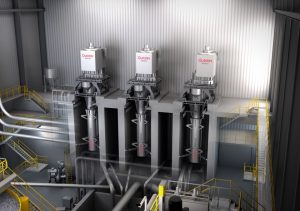
Most of the cases where we, as Metso and Outotec, won or lost a tender, the argument was not around price or sentiment; it was always technical where, for example, the feed was too coarse for the HIGmill, or the end product needed to be so fine that the Vertimill was ruled out.
We, therefore, want to continue offering both technologies; we will not shelve one because we believe there is room for both solutions.
IM: Could this combination then enable you to offer a more customised solution for customers?
SK: That is where the benefit (from the combined Metso Outotec) for the industry really kicks in; our customers are not just getting standard solutions; some tailoring is involved. They will be able to get more specific and solution-oriented, performance-balanced pieces of equipment.
IM: Would you like to add anything else?
SK: I need to say that I am quite excited about the opportunities for the new company, Metso Outotec. There are benefits for both us and the wider industry.
Personally, I am humbled to be elected to run such a large organisation of industry experts and high-quality equipment. It is exciting times ahead.










